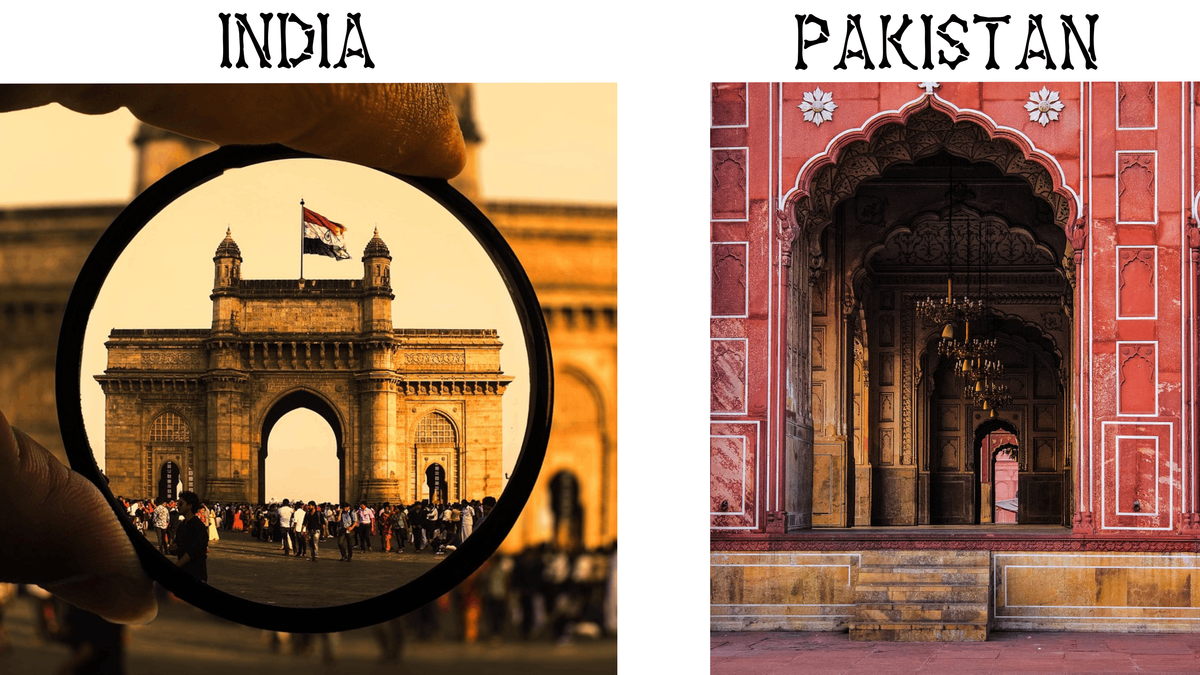
By Elke Porter | WBN News Global | May 7, 2025
As of May 2025, tensions between India and Pakistan remain a significant concern for South Asia and the global community. The relationship between the two countries has long been shaped by a mix of historical grievances, territorial disputes, and periodic diplomatic efforts. While emotions often run high on both sides of the border, this article aims to present a neutral overview of the backstory, key events, and current developments.
Origins: A Shared History Under Colonial Rule
Neither India nor Pakistan existed as modern nation-states before 1947, although during the reigns of the Marathas, Rajputs, Mughals, and Mauryas, the Indian subcontinent was mostly governed as one. Both countries were born from the partition of British India, which had been under colonial rule since the mid-19th century. As the British Empire prepared to exit the subcontinent, a plan was implemented to divide the region based largely on religious demographics.
On August 15, 1947, the Dominion of India was established, and shortly before that, on August 14, 1947, the Dominion of Pakistan came into existence. Pakistan was created as a homeland for Muslims, while India remained a secular state with a Hindu majority but substantial religious minorities. The partition led to one of the largest mass migrations in history—between 12 and 20 million people were displaced—and up to one million people were killed in the ensuing violence.
Early Conflicts and the Kashmir Dispute
The primary flashpoint between the two nations has been the disputed region of Jammu and Kashmir. At the time of partition, princely states were given the option to join either India or Pakistan. The Maharaja of Kashmir, a Hindu ruler of a Muslim-majority state, chose to accede to India in October 1947, triggering the First Kashmir War (1947–1948). The conflict ended with a United Nations-brokered ceasefire, leaving the region divided between Indian-administered and Pakistani-administered Kashmir.
Further Wars and Hostilities
Three more significant wars followed:
- 1965 War: A second full-scale conflict broke out over Kashmir, ending in a stalemate and leading to the Tashkent Agreement mediated by the Soviet Union.
- 1971 War: Tensions peaked during the Bangladesh Liberation War, which saw India intervening militarily in support of East Pakistan's independence movement. The war resulted in the creation of Bangladesh, formerly East Pakistan.
- 1999 Kargil War: Pakistan-backed forces crossed the Line of Control (LoC) in the Kargil region, leading to a limited war fought in the mountains of Indian-administered Kashmir. The Indian Army eventually regained control, with international pressure urging Pakistani withdrawal.
Nuclearization and Escalation
Both India and Pakistan conducted nuclear tests in 1998, fundamentally altering the strategic balance in South Asia. Since then, both countries have engaged in a series of military and diplomatic standoffs, including:
- 2001 Indian Parliament attack
- 2008 Mumbai attacks, killing over 170 people and attributed to Pakistan-based militants
- 2016 Uri attack, followed by Indian "surgical strikes"
- 2019 Pulwama attack, killing 40 Indian paramilitary personnel and prompting Indian airstrikes in Balakot, Pakistan
In the same year, India revoked Article 370 of its Constitution, removing the special status of Jammu and Kashmir. This move was condemned by Pakistan and led to renewed diplomatic and military tensions.
Recent Developments: The 2025 Pahalgam Attack
On April 22, 2025, a terrorist attack in Pahalgam, a tourist town in Indian-administered Kashmir, killed 26 people, including civilians and security personnel. India blamed Pakistan-based militant groups, citing intelligence reports.
In response, India launched Operation Sindoor on May 6, 2025, targeting suspected terrorist infrastructure across the border. Reports indicate both military and civilian casualties on the Pakistani side, and continued skirmishes along the LoC have been observed.
The Pakistani government condemned the strikes, denied involvement in the Pahalgam attack, and launched its own counter-operations. The escalation has led to diplomatic expulsions, suspension of trade, and calls for restraint from the international community, including Canada.
Canada's Perspective
Canada maintains a policy of neutrality and encourages peaceful dialogue between the two nuclear-armed neighbors. As a multicultural country with sizable Indian and Pakistani diaspora communities, Canada continues to call for regional stability, respect for human rights, and adherence to international law.
The Canadian government, along with global partners, urges both nations to exercise restraint, investigate incidents transparently, and return to the negotiating table. In particular, Canada emphasizes the need to avoid civilian harm and to work through diplomatic channels to resolve long-standing disputes such as Kashmir.
Conclusion
The India-Pakistan relationship is one of the most enduring and complex rivalries in modern geopolitics. Rooted in a painful partition and shaped by repeated conflicts, it is further complicated by nuclear capabilities, nationalism, and unresolved territorial claims. While past efforts like the 1972 Simla Agreement and various confidence-building measures have shown that diplomacy is possible, lasting peace remains elusive.
As of May 2025, with cross-border tensions escalating once again, the international community—including Canada—faces a familiar challenge: how to support de-escalation while respecting the sovereignty and security concerns of both nations.
#India Pakistan Relations #Kashmir Conflict #South Asia Politics #Partition 1947 #Nuclear Rivals #Canada Perspective #Indo Pak Tensions #Geopolitical History #WBN News Global #Elke Porter
Connect with Elke at Westcoast German Media or on LinkedIn: Elke Porter or contact her on WhatsApp: +1 604 828 8788


